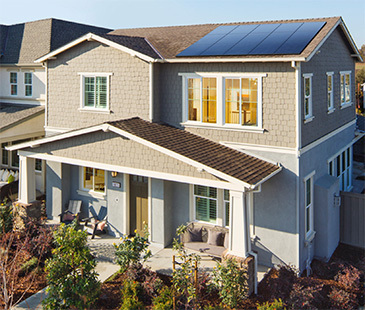
California residents are no strangers to either wildfires or power blackouts. But the heatwave currently broiling the state has ramped up both problems to new levels. At a time when people are trying to stay home to avoid spreading COVID-19, some solar homeowners are left wondering how to keep their lights on.
Record-breaking heat – fueled at least in part by climate change – has laid the groundwork for an unusually severe fire season. New daytime highs have scorched the state, and Death Valley National Park recently hit 130 degrees Fahrenheit (54.4 Celsius) – the highest temperature ever recorded on earth. Meanwhile, an unusual rash of dry lightning – lightning storms that come without rain – has set off some of the biggest of the recent California fires.
The intense heat has also triggered rolling blackouts. Tens of thousands of people statewide have lost power daily for brief periods in what are termed “public safety power shutoffs.” These shutoffs by utilities like Pacific Gas & Electric (PG&E) are designed mostly to prevent more fires. In 2019, fire officials found that PG&E power lines actually caused the season’s biggest wildfire, so the power is now shut off in some regions where weather conditions make fires likely.
This year, the intense heat caused another problem: The demand for air conditioning – and electricity – has soared. California has become the nation’s leader in the use of solar energy in recent years, so day-time electricity generation has not been a problem. But in the evenings, when utilities typically switch to fossil fuels, rolling blackouts take place.
The exact cause of these power outages remains unclear, but we know that hundreds of thousands of Californians have gone at least briefly without power, and that millions more could be affected.
Many people believe homes using solar power are independent of the grid and not affected by blackouts. In fact, just the opposite is true. Solar homes and businesses tend to be “grid-tied,” which means they’re in a partnership with the utility. Solar panels produce the home’s energy during the day, and the utility provides energy at night or on cloudy days.
This arrangement greatly reduces – or even eliminates – energy costs for solar homeowners and allows them to benefit from net metering. But it means solar homes can go dark in blackouts.
These power shutoffs take place to ensure safety. First, closing down the power protects a solar home. With the grid down, the residual power produced by solar panels can do lasting damage electrical devices. Second, power from solar panels might zip back into the grid after a blackout, and that electricity could hurt utility workers who’ve come to fix power lines or transformers.
Solar homes can avoid power shutoffs by pairing a solar system with a solar battery, like the SunPower Equinox® home solar system with SunVault® Storage. It retains the solar energy panels have collected and allows homeowners to use that energy when the sun isn’t shining – or when the grid shuts down. The Equinox system coupled with SunVault Storage can do this seamlessly because it’s the first solar plus storage system designed and warranted by one company.
Home storage systems usually store enough energy for brief periods, so homeowners typically target which appliances get power during an outage. That’s no problem for SunPower’s Equinox system. It can be easily programmed to power select appliances – like the refrigerator or important lights – depending on the size of the battery.*Appliances and devices powered by the battery storage system will be determined by the homeowner before installation and typically include lights, select appliances and outlets. The battery storage system should not be relied upon as a power source for critical medical devices. Some appliances may not be compatible with your storage system. Your SunPower installation contractor can help you determine which appliances and devices are compatible. The life of the battery storage system will vary depending on a number of factors, including: the amount of energy stored in the battery, the amount of wattage used by the appliances and electronics connected to the battery storage system, the age of the battery, the battery’s ability to recharge during daylight hours due to weather, the frequency and duration of battery usage, and other factors. Battery life will decrease with time and use.
To figure out how much battery power you'll need, your SunPower dealer will help you find out how much energy your home consumes as well as the size of your solar system and how much power it produces. The Equinox system with SunVault Storage is also covered by a single warranty: The SunPower Complete Confidence Warranty.
Find out more about how a solar battery works and how much solar plus storage can save you.

